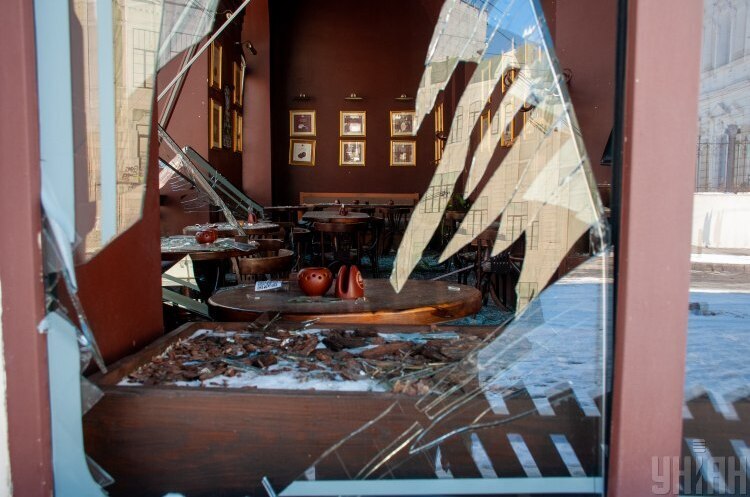Craving for life or how war changes restaurant industry
And where is the fine line between volunteering and business?

Overcrowded patios in Kyiv and nightclubs in Odesa, a recent episode of people carousing in a beach bar in Dnipro, as usual, sparked two opposite reactions in the community. One condones such behavior at a time of war, and the other praises the support for the economy, whatever the form. NBU Deputy Governor Serhii Nikolaichuk claims that Ukrainian restaurant-keepers have a revenue turnover of 65–70% compared to the pre-war. Mind has explored why overcrowding of particular capital's food establishments and restaurant boom on the home front are deceptive. And what are the reasons behind the industry's most significant transformation?
Standing before war
The restaurant-keepers faced the 24th of February, barely having beaten the outcome of COVID-19 with its neverending quarantines. The financial reserves that would help sit out the crisis averaged 3–5 months across the industry. It corresponds to the national average score: according to a survey by the European Business Association, 32% of small and medium-sized businesses have a margin of financial stability for several months, 22% of those for one month, and 9% can hold out for six months.
The reserves the restaurant-keepers had were drained by eager volunteering. During the first weeks of the war, they had been supporting TD, AFU, and civilians cooking a couple of hundred meals a day.
Ukrainian Restaraunt Association, uniting some 2,500 food establishments, fed tens of thousands of people daily. As reported by the restaurateur Taras Serediuk, since the first days of the war, 36 food places joined 'MAFIA Humanitarian Restaurant' thus making the chain the biggest partner of the international humanitarian organization World Central Kitchen. "Joined by a team of our humanitarian restaurants, 1.536,428 combo meals have been prepared for war-affected Ukrainians," he says.
However, from April-May, restaurants are trying to get back to work, at least partly, by offering their services half-time or in smaller areas.
At the end of February, only 15-20% of restaurants were open in Ukraine. Nobody knew where the frontline would be, and people were concerned solely with their security.
In mid-March, the picture started to change on a regional level. The western region, which remained relatively unscathed by hostilities, quickly restored business, responding to the flow of resettlers, among other things. At the same time, the capitals (the first and the current ones), the North and East of the country, lived under siege.
Evacuation of the restaurant business. How real is it?
Relocation in the food service industry is theoretically possible, but such practice is rather an exception. The restaurants are linked to the primary location by the food supply chain, logistics, and core customer base.
Besides, this kind of restaurant-relocatees has slim chances of finding a nice location, as those tend to be occupied by the old-timers. That is why revitalizing the catering business goes hand in hand with de-escalation in any given region.
Early indications said that by May, more than half of the pre-war number of restaurants and cafes had opened. The restoration process was and is uneven: it is less evident in Chernihiv and Kharkiv, as well as in the Kyiv region, but the capital itself puts a lot of effort in an attempt to catch up.
Coffee houses and small bakeries turned out to be sitting pretty. Oddly enough, luxury restaurants are also relatively resilient, as they, by default, need a smaller flow of visitors to self-support.
The heaviest toll is on the large-scale restaurant projects with many seats and signature dishes. This kind of format does not relate to current circumstances.
The survival prognosis in the industry varies depending on the region. However, experts believe that 1/3 of restaurants throughout the country are going out of business.
What is it like to start afresh?
Restaurants that were able to get back in the game and operate as designed are now facing the same problems:
-
lack of personnel caused by migration and mobilization.
-
decrease in gains (50% on average compared to pre-war) owing to fewer guests.
-
price-gouging or unavailability of certain products followed by the reducing options on the menu. Depending on the category, the prices for ingredients have soared by 20–30%. The most vulnerable items are expensive-to-purchase fish, seafood, exotic fruits, and specific seasonings, particularly for Asian cuisines, the logistics of which are significantly complicated.
-
irrelevance of some formats, like corporate celebrations, Birthday or children's parties, and hen nights.
-
catering demand collapse.
-
reduced working hours of the restaurants triggered by curfews that hit dinners (the most profitable element of the restaurant business).
-
and until recently, a ban on the sale of alcohol, which then turned to strict time restrictions that did not allow establishments that prioritize serving drinks to open.
Despite the harshness of the crisis, industry representatives are confident that the majority will cope with it. Restaurants with a Russia-related focus and places with Russians as founding members will be gone for good.
Ievgen Klopotenko, a restauranteur and communicator of Ukrainian cuisine, believes the crisis attacks the toughest – the ones who survived COVID.
If you have read this article to the end, we hope that means it was useful for you.
We work to ensure that our journalistic and analytical work is of high quality, and we strive to perform it as competently as possible. This also requires financial independence. Support us for only UAH 196 per month.
Become a Mind subscriber for just USD 5 per month and support the development of independent business journalism!
You can unsubscribe at any time in your LIQPAY account or by sending us an email: [email protected]


